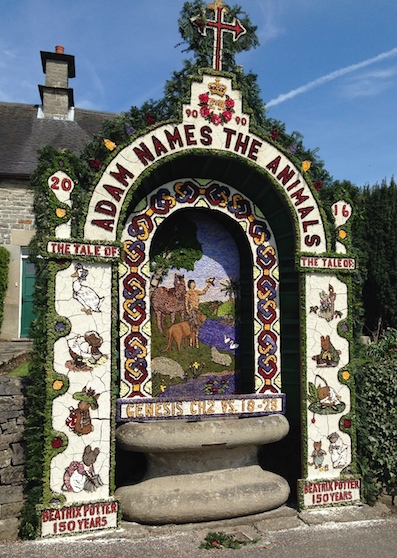
Every cloud has a silver lining. As I was unable to travel back home this past weekend, I stayed in the Peak District and savoured the fine weather. From a fellow traveller, I learned about the well dressing custom that is rife in Derbyshire and decided to visit Tissington Village whose well dressing custom dates back several centuries and was happening this weekend.
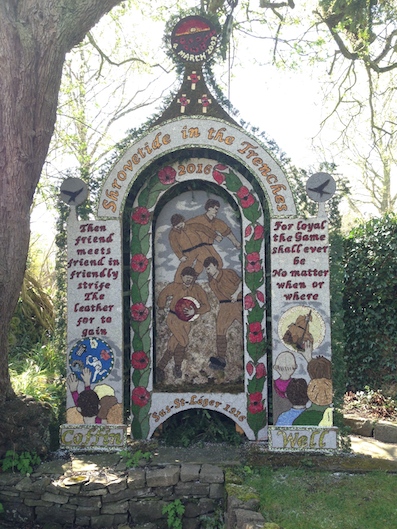
In Tissington the well dressings are put in place on the eve of Ascension Day and remain for a week. The wells are then formally blessed by the village clergy the following day. The purpose is to give thanks to God and the gift of life through water. According to the Well Dressing website, some villages developed the custom to celebrate piped water coming to their village, and to acknowledge the purity of the water.

The detail of the well dressings are astonishing. Each year the designs change to acknowledge significant events such as the centenary of the First World War, key Biblical events or simply a friendly theme for children.
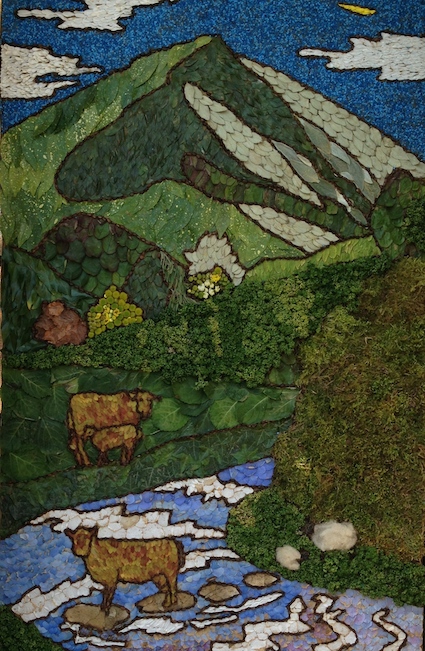
Clearly the techniques are developed and shared, as most boards used similar plants and natural materials. The wooden boards are re-used each year. They require being soaked for several days in the village pond. This stops the boards swelling with the moisture from the clay overlay which would cause the clay to crack and affect the design.
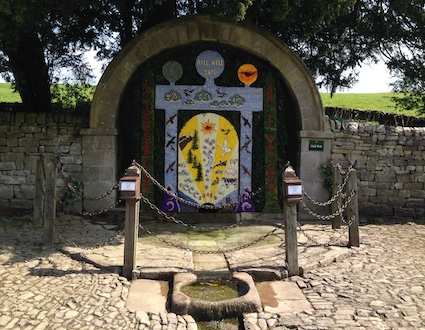
The clay is dug locally, and mixed with salt. It requires being trod – like grapes – apparently a task that local children enjoy. It is thrown onto the boards and smoothed down to a depth of at least 2cm. The design is pricked into the clay .
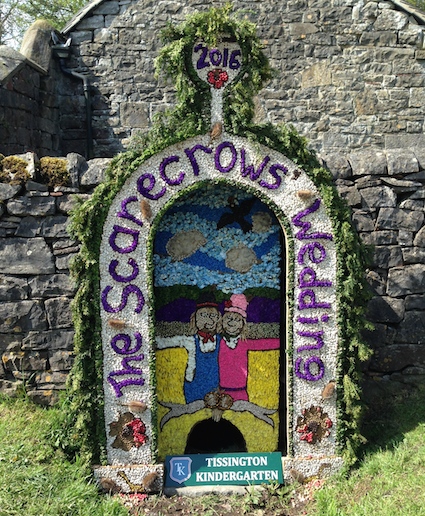
The materials used are natural – the dark outlines are created from alder cones, bark or coffee beans! The background dark green surrounds come from yew. Curly-leaved parsley also seemed a popular green border. The flower petals are added last of all and are overlaid like tiles on a roof. These are done the day before the boards are erected so they are fresh. Given these photos are taken 4 days afterwards, the petals are lasting well. The Well Dressing website gives detailed instructions as to the construction.
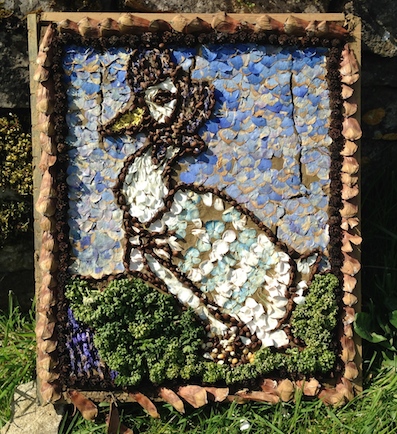
The photo above is not a well dressing. It was on a small board outside a house. I liked this because it suggested that this could be a really good project for a family or class, if undertaken on a significantly smaller scale. Nature mandalas are the beginnings of such a project and pattern work may be easier to begin with.
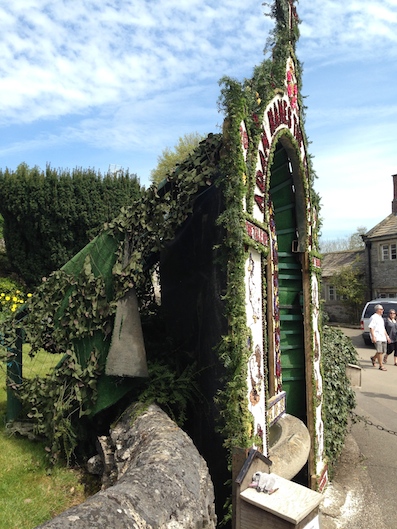
What may also work is for children to reflect on the concept of “thanks” and consider the design in light of this and its placement outside. Who or what are the children grateful for and why? How can this be represented in their design? There would also need to be discussions about suitable natural materials and how to source them.
Finally, beside each well was a donation box. Collectively the monies raised are shared between local churches in Tissington, the Village Hall and a local Stroke Club and Cancer charity. Again, this could also be applied to a school situation where the finished designs are used as a funder raiser – perhaps the children could make this decision.
All-in-all, the Well Dressing provides a context for a form a nature art that celebrates spring, causes people to reflect on their blessings and donate to a needy cause. I rather like the open-ended possibilities of this custom when applied to a school context.



















